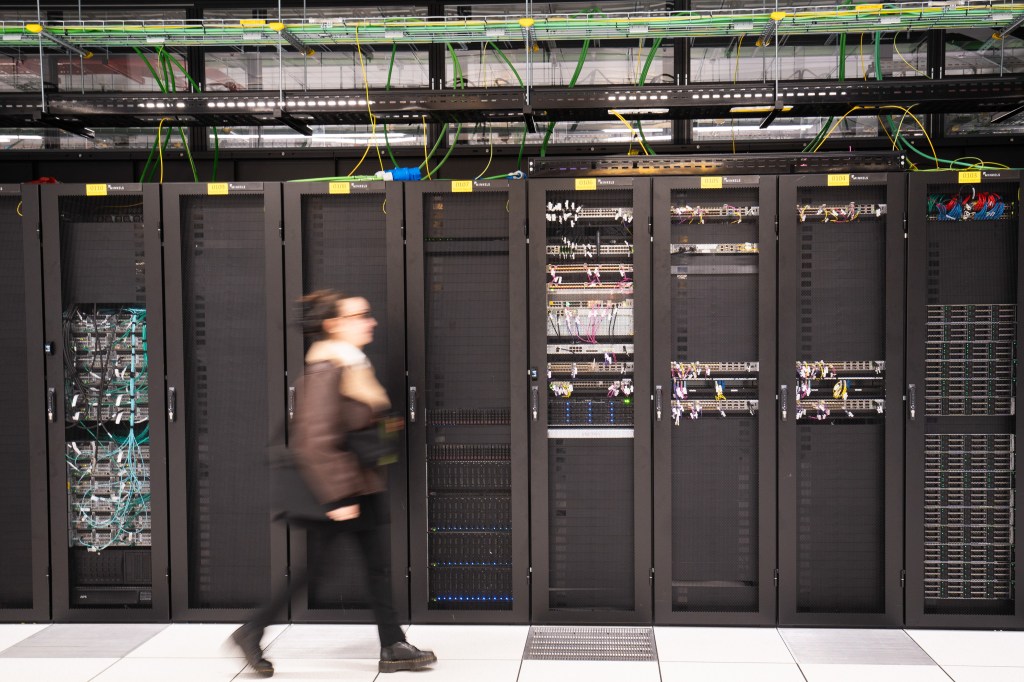Rising Energy Costs Threaten AI and Data Center Expansion
The rapid expansion of artificial intelligence (AI) and data centers is encountering a formidable challenge: escalating energy prices. As these facilities proliferate to meet the surging demand for AI applications, their substantial energy consumption is becoming increasingly costly and unsustainable.
The Energy Appetite of AI and Data Centers
AI data centers are notorious for their immense power requirements. In 2022, new servers demanded 195 terawatt-hours of electricity, equivalent to the annual consumption of 18 million households. Projections indicate that by 2027, this figure could soar to 500 terawatt-hours, matching the energy needs of 46 million households. This surge is over and above the 349 terawatt-hours consumed by existing data centers in 2022. Without additional sources of carbon-free power, pollution from AI training and use could skyrocket. ([techcrunch.com](https://techcrunch.com/2024/11/14/nearly-half-of-ai-data-centers-may-not-have-enough-power-by-2027/?utm_source=openai))
The financial implications are equally staggering. A study from Georgetown, Epoch AI, and Rand reveals that hardware costs for AI data centers have been increasing by 1.9 times annually between 2019 and 2025, while power needs have doubled each year over the same period. By June 2030, leading AI data centers may house 2 million AI chips, cost $200 billion, and require 9 gigawatts of power—comparable to the output of nine nuclear reactors. ([techcrunch.com](https://techcrunch.com/2025/04/24/within-six-years-building-the-leading-ai-data-center-may-cost-200b/?utm_source=openai))
Environmental and Infrastructure Strains
Beyond financial concerns, the environmental impact is profound. The AI boom is fueling the demand for data centers and, in turn, driving up water consumption. In Virginia, home to the world’s largest concentration of data centers, water usage jumped by almost two-thirds between 2019 and 2023, from 1.13 billion gallons to 1.85 billion gallons. This trend is unsustainable, especially in regions already facing water scarcity. ([techcrunch.com](https://techcrunch.com/2024/08/19/demand-for-ai-is-driving-data-center-water-consumption-sky-high/?utm_source=openai))
Moreover, the proliferation of data centers is straining the U.S. power grid. Reports indicate that more than half of households experiencing the worst power distortions live within 20 miles of significant data center activity. This distorted power can damage appliances, increase the risk of electrical fires, and even lead to brownouts and blackouts. AI data centers, with their volatile energy requirements, exacerbate these issues. ([techcrunch.com](https://techcrunch.com/2024/12/29/ai-data-centers-could-be-distorting-the-us-power-grid/?utm_source=openai))
Industry Responses and Innovations
In response to these challenges, tech giants are investing heavily in renewable energy and innovative technologies. Microsoft, for instance, has added 475 megawatts of solar power to its portfolio to meet the growing energy appetite of its data centers. The company signed deals for solar projects across Illinois, Michigan, and Missouri, reflecting the immediacy of its needs. ([techcrunch.com](https://techcrunch.com/2025/03/20/solar-notches-another-win-as-microsoft-adds-475-mw-to-power-its-ai-data-centers/?utm_source=openai))
Similarly, the Stargate joint venture, a $100 billion partnership between OpenAI, Oracle, and SoftBank Group, plans to power its data centers with solar energy and battery storage. The renewable installations will be built by SoftBank-backed SB Energy, aiming to mitigate the environmental impact of their operations. ([techcrunch.com](https://techcrunch.com/2025/01/24/stargate-will-use-solar-and-batteries-to-power-100b-ai-venture/?utm_source=openai))
The Biden administration has also taken steps to address the issue by allowing private sector AI companies to lease federal sites owned by the Department of Defense and Department of Energy for building AI data centers. Companies are required to bring online enough clean energy resources to match the electricity needed to power these centers, promoting sustainable growth in the AI sector. ([techcrunch.com](https://techcrunch.com/2025/01/14/biden-administration-opens-up-federal-land-to-ai-data-centers/?utm_source=openai))
The Road Ahead
Despite these efforts, the path forward remains challenging. Meta, for example, plans to spend up to $72 billion on AI infrastructure in 2025, more than doubling its investment to build data centers and servers. This aggressive expansion underscores the escalating compute arms race among tech giants. ([techcrunch.com](https://techcrunch.com/2025/07/30/meta-to-spend-up-to-72b-on-ai-infrastructure-in-2025-as-compute-arms-race-escalates/?utm_source=openai))
Innovations in energy efficiency are also emerging. Startups like NeoLogic are developing more energy-efficient CPUs for AI data centers, aiming to reduce power consumption without compromising performance. By simplifying logic and reducing the number of transistors, these new CPUs could offer a viable solution to the energy crisis facing the industry. ([techcrunch.com](https://techcrunch.com/2025/08/13/neologic-wants-to-build-more-energy-efficient-cpus-for-ai-data-centers/?utm_source=openai))
In conclusion, while the AI and data center industries continue to expand at an unprecedented pace, they must confront the dual challenges of rising energy costs and environmental sustainability. Through investments in renewable energy, innovative technologies, and supportive policies, the sector can strive to balance growth with responsibility.



